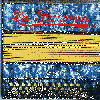| La Paloma History | German | ||
It might be difficult to find a person in the western hemisphere, who would not recognise this notorious melody, but even in places like Japan, India or China La Paloma represents something like a (rather concealed) worldwide musical common denominator.
Although sung as often as no other song, La Paloma lived a life of strange obscurity, became something like a folksong in countries as diverse as Hawaii, Mexico, Germany and Zanzibar, and almost secretly accompanied the history of popular music for almost 140 years. Like many other songs it was almost played to death during the 60s and 70s, appearing on countless cheaply produced easy-listening albums, discredited by boring arrangements and faceless production. But it remains a fascinating fact (one of many concerning the history of this song) that La Paloma intrigued artists at home in so many different musical worlds whether it be Tango, Jazz, Pop, Opera, Twist, Surf, Contry, Reggae and Rock. What other piece of music may link Hawaiian slide guitar, Benjamino Gigli, Elvis, Charlie Parker, German íSchlagerí, Dean Martin, Chinese musicians, street singers in Paris and even the Callas, to name but a few?
All over the world, La Paloma seems to capture the musical daydreams of humming, whistling and singing people. Its text might vary from one country to another, still everyone seems to feel the basic contents: longing, loneliness, separation, love, reunion, sometimes death. Evoking images of the ocean, doves and islands, it serves as a tool to abandon oneís own closed world for the beautiful unknown, at least for a moment. But that is only one part of a possible explanation, why La Paloma is such an exceptional tune. Even considering the catchy melody that never seems to loose its basic charme no matter what style is taking care of it, the reason for this kind of both persistence and diffusion, unparalleled in the history of music, remains a mistery.
![]() A
short history of La Paloma
A
short history of La Paloma
Although
La Paloma became part of the folksong repertoire in many countries and
the liner notes of a great deal of records still label it as ítraditionalí,
it does have an identifiable composer. Sebastián de Iradier y Salaverri
was born in 1809 in Lanciego, located in the province of Álava in Baskia,
Spain. He shares the fate of many a 19th century composer: rather famous
in his time, almost immedeately forgotten after his passing away. Not
too many facts are known about Iradiers life. He played church organ in
his youth, moves to Madrid, becomes first Maestro of Solfège there, trains
singers and teachers alike, and seems to have worked his way up to the
better circles of the society there. But the musical capital of the time
was Paris, and thats where we find Iradier in 1851. Henri Heugel, the
most important music publisher then, recounts that he met Iradier at the
salon of maestro Rossini, the place to be invited to in Paris. There he
must have had some kind of reputation, at least he became the private
singing instructor of Eugénie, the wife of emperor Napoléon III. As she
was of spanish origin, he might have met her earlier in his Madrid years.
Nothing much is known about his character, a spanish critic describes
him vaguely as ícontroversialí, some kind of adventurous soul, gaining
protection and admiration as easily as getting into trouble for his lifestyle
and behaviour. In 1861 Iradier somehow made it to Cuba, then a spanish
colony. What took him there we donít know, but that is where he composed,
among others, the two songs for which he always will be remembered. Two
indeed, as he is also the unrecognized composer of the famous íHabaneraí
everyone knows, the one sung in Carmen. It was Heugel, who realised that
Bizet stole the melody of íEl arreglitoí out of a collection of spanish
songs by Iradier that Heugel had published earlier. Ironically the little
note survived on which Bizet himself ordered that collection out of the
Bibliothèque Nationaleí. Iradier himself did not live to see this happen,
he died in 1865, not too far from his birthplace in Vitoria, whithout
witnessing the flight of La Paloma around the world.
Like
the carmen aria, La Paloma is written in the form of a habanera, a cuban
dance rhythm. The exact date when it was written remains unknown, but
already in the mid 1860ies there are german and french issues and translations
of the original spanish text, attributed to Iradier as well. Apparently
it didnít make much of an impression in Spain, but somehow this song has
travelled from Cuba to Mexico where it was an instant success. Legend
has it that the Hapsburg emperor Maximilian (nicknamed íThe Unfortunateí)
wanted to hear his favourite song one last time, before the rifles of
Benito Juárezí troups made an end to european hegemony in this part of
middle america. As untrue as it is, this anecdote seems to be somehow
typical for La Paloma. In Mexico at that time it was not only danced to
at the court, but also sung and rewritten in the streets by the rebels.
Of course you can still find it here today.
From Mexico La Paloma travelled to Hawaii,
accompanied by the guitar, introduced there by some mexican and californian
vaqueros, cowboys. By 1900 the song was played with the new hawaiian guitar
techniques, slack key and slide. The Pacific International Exposition
in 1915 had some hawaiian entertainers and their music initiated the first
craze of hawaiian style music, it hit Europe in the 20ies, reemerged in
pre-war London, returned in the 50ies. One of the first songs recorded
by hawaiian musicians: La Paloma.
Around 1910 there were about 2000 different
arrangements of La Paloma printed worldwide, an inormous figure clearly
indicating the popularity of that song.
There were many routes along which La Paloma travelled around the world,
one of them was the hawaiian, another was the military, as they had a
lot of bands back then. Not surprisingly that one of the earliest recordings
of La Paloma is made by the french Garde Républicaine in 1899. But also
high society was enjoying the tune in the many salons that were florishing
in the second half of the last century. That is where many opera singers
gave recitals, where one went to be seen and wanted to discover new talent.
Spanish songs represented the exotica of the day and were very popular,
espacially the ones by Iradier. Again we find some irony in the fact that
these ditties, as one critic called them, lost their popularity right
before the recording age, and apart from La Paloma we find only one interpretation
of another Iradier song on a 78, with the faded voice of one of the greatest
singers of all times, Adelina Patti.
But regarding La Paloma it almost seems
as if Caruso is the only opera singer who did not record it, otherwise
almost everybody did (Galli-Curci, de Lussan, Gigli, Schmidt, Tauber to
Pavarotti). And it didnít stop there. La Paloma found ist way into Jazz,
Jelly Roll Morton described it as part of the New Orleans repertoire,
Charlie Parker played it, Carla Bley ...
We find it in german Schlager charts more
then one time, hear it by french chansonniers, find it raggaed up in Jamaica.
Or played on a chin in China (with cool drum machine accompaniment), interpreted
by german avantgarde rock band Amon Düül, listen to Elvis in Blue Hawaii,
hear Dean Martin croon or Chubby Checker twist. Lately we found it on
the bridge of spaceship Enterprise (thatís right, one of Mister Qís little
tricks), as well as in numerous other films (two were named after it).
We have russian versions, know of an arabic one, a japanese one, hear
it being played in the Paris metro as well as in the train station of
Charbin in Mandchuria. We listen to it played as a funeral march but how
it ended up in Zanzibar as a wedding song is still a mistery waiting to
be resolved.
 |
|
|
One
Song For All Worlds IV
CD-0272-E/U |
|
 |
|
| One
Song For All Worlds III CD-0241-E/U |
|
 |
|
| One
Song For All Worlds II CD-0227-E/U |
|
 |
|
| One
Song For All Worlds I CD-0220-E/U |
|